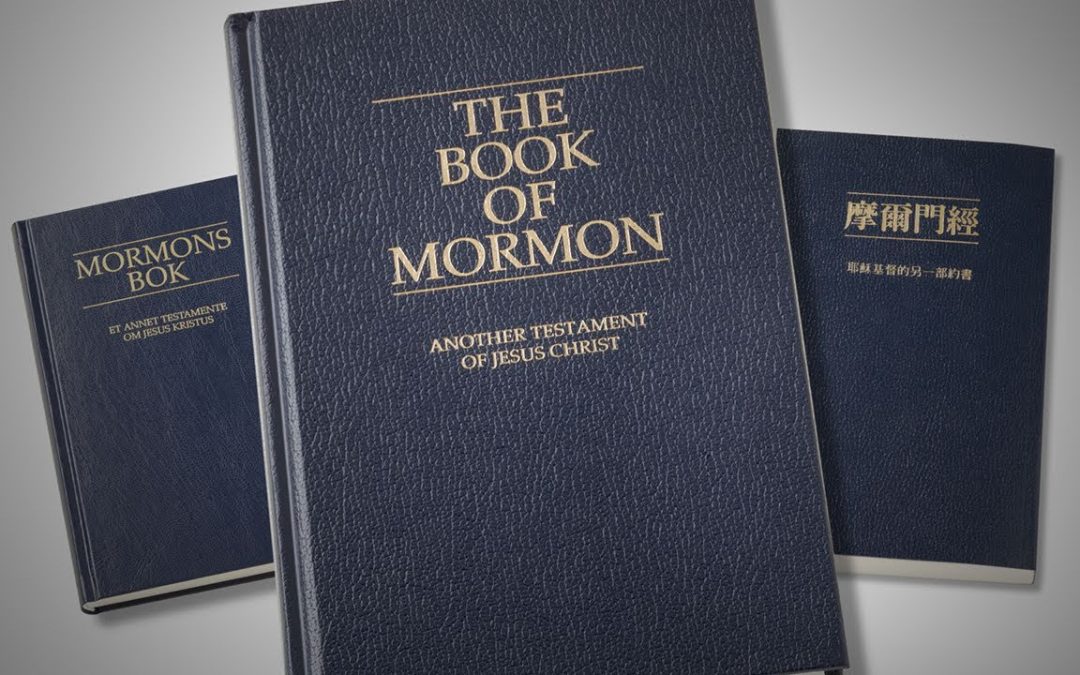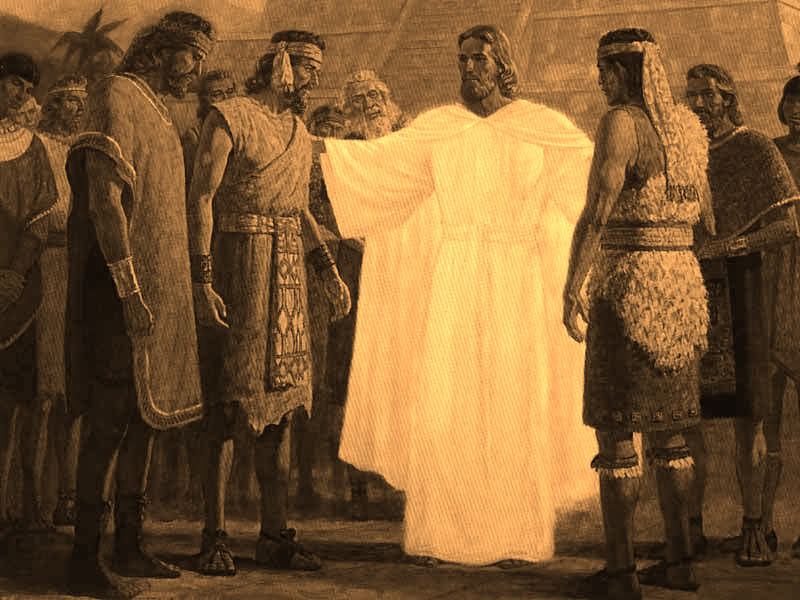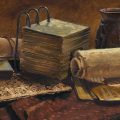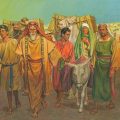Question
Hey Gramps,
After a long break in study, I am developing a very strong testimony of the Book of Mormon. A lot of this came from reading the discourses of the prophets and some of the famous works on the book. I have been trying to get this testimony for some time and one of the things that has prevented me from doing so is the existence of anachronisms (e.g steel, animals, etc.) in the New World as it is depicted in the Book of Mormon. How can you reconcile believing in what the Book of Mormon is saying about God and Jesus and everything else (and I am understanding it a lot better…I credit your site as well.) with the fact that some things clearly did not exist at the time and place of its setting.
Tommy
Answer
Dear Tommy,
I think that your question would be better posited if you had used the term apparent anachronisms. Your statement that it is a “fact that some things clearly did not exist at the time and place of its setting” presupposes some unimpeachable source of information on what did not exist in pre-Columbian America, and you specifically mention steel and certain animals. I would be most interested in your source of such unimpeachable, factual information. You mention as examples of the apparent anachronisms steel and certain animals (as I feel rather certain that you did not mean ALL animals). Perhaps you are referring to the horse, and the elephant, both of which are mentioned in the Book of Mormon. The horse was thought to have been introduced by the Spaniards when they came to the Americas in 16th century because the Aztecs whom they subjugated did not use horses. However, Sir Francis Drake, in his exploration of the western coastal regions of North America, reported seeing herds of wild horses in what is now Oregon. In addition, in the Museum of Natural History in Buenos Aires, Argentina, I have seen the skeleton of a prehistoric horse, as I recall, discovered by Charles Darwin. The only difference that I could detect between that skeleton and those of modern horses was that the nose bone where it separates from the rest of the cranial skeleton in modern horses is about four inches long, whereas in the prehistoric example it was about 10 inches long.
From an article entitled, “ La Brea Tar Pits: A Critique of Animal Entrapment Theories,” in the Creation Research Society Quarterly Journal, Vol 39 No 2 pp 160-167 December 2002, is printed the following—
“Dr. John C. Merriam, a vertebrate paleontologist at the University of Berkeley, first heard of the fossils of Rancho La Brea in 1905 from Union Oil geologist William W. Orcutt. After viewing the fossils and visiting the source beds, Merriam wrote an article in 1906 about a pool of tar that deceived, trapped, and swallowed up its victims. Two years later, he wrote an expanded treatment of the subject for a popular magazine. The editor’s introduction to the article had the following words:
“This sticky pool of water and tar has been a Death Trap of the Ages. Here, for centuries, evidently, the enormous ground-sloth and other clumsily moving creatures of his kind came for water, only to be held relentlessly; herds of bison and horses were entombed, extinct forms with whose bones mingle those of the mammoth and the camel. To this helpless prey, snared for them in this bird-lime bed, came the lords of the era, the huge sabre-tooth tiger and monster wolf, the largest of the dog family. Trapped in their turn, they, too, fed the black maw of the asphalt pool and the death trap baited itself anew.”
In addition, again, I observed in the Dawson County Museum in Lexington, Nebraska in July, 1998, the skeletal remains of a mastodon that had recently been unearthed by a nearby road crew. The mastodon could easily have been described in Book of Mormon literature by a word that could be translated as elephant. So at least the horse and the elephant have been independently determined to have existed on the America continent during pre-Columbian times.
Now concerning steel. Steel and iron are readily oxidizable metals and would decay to rust if left untended for extended periods of time. I have heard (although I do not have a corroborative source) of a steel knife blade found in a pre-historic North American site. It had not rusted away because it was dropped in a fire and was covered with carbon that prevented further oxidation.
You have taken an interesting approach to evaluating the Book of Mormon. You apparently have taken on faith the declarations of archeologists or others with scientific credentials, and have used their declarations to pass judgment on a scriptural record containing material that was written by prophets of God under direct inspiration of heaven. In fact, the prophet Joseph Smith declared in the introduction to the Book of Mormon that the Book of Mormon was the most correct of any book on earth and the keystone to our religion, and that man would get nearer to God by abiding by its principles than by any other book.
It would seem to me to be much more logical to judge the scientists and intellectuals of the world by the writings of the prophets of God rather than to judge the prophets by the professors of science. Let me suggest to you a procedure by which you may obtain a sure and abiding testimony of the truthfulness of the Book of Mormon. Regardless of how often you have read it or how deeply you have delved into studying it, I would suggest the following: to read it again, from cover to cover, and of course do so with a real and sincere intent to discover its truthfulness. As you read it this time, before you start to read each new page, pause and ask God if He will reveal to you that the book is true. That would be a total of up to 531 prayers. If you would do that, I will promise you, in the name of the Savior, that before you reach the end of the book your prayer will have been answered, and you will have received the testimony that you seek.
Gramps







